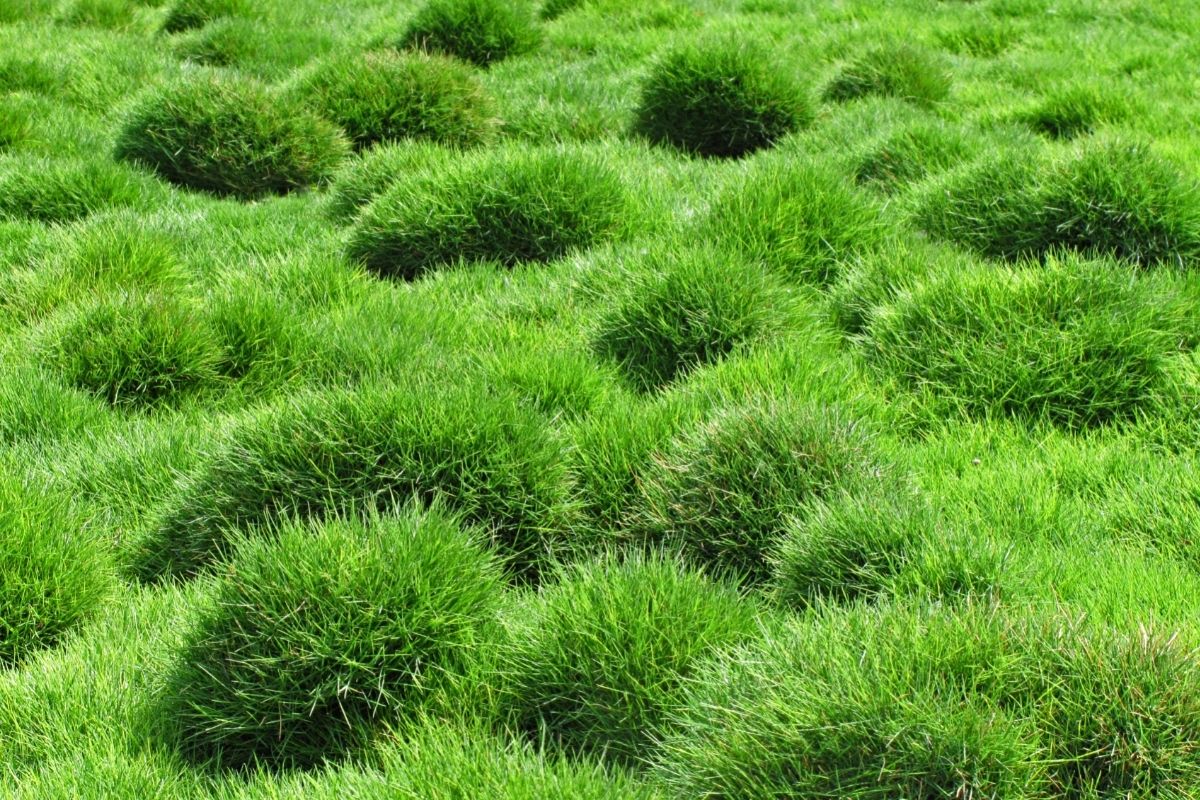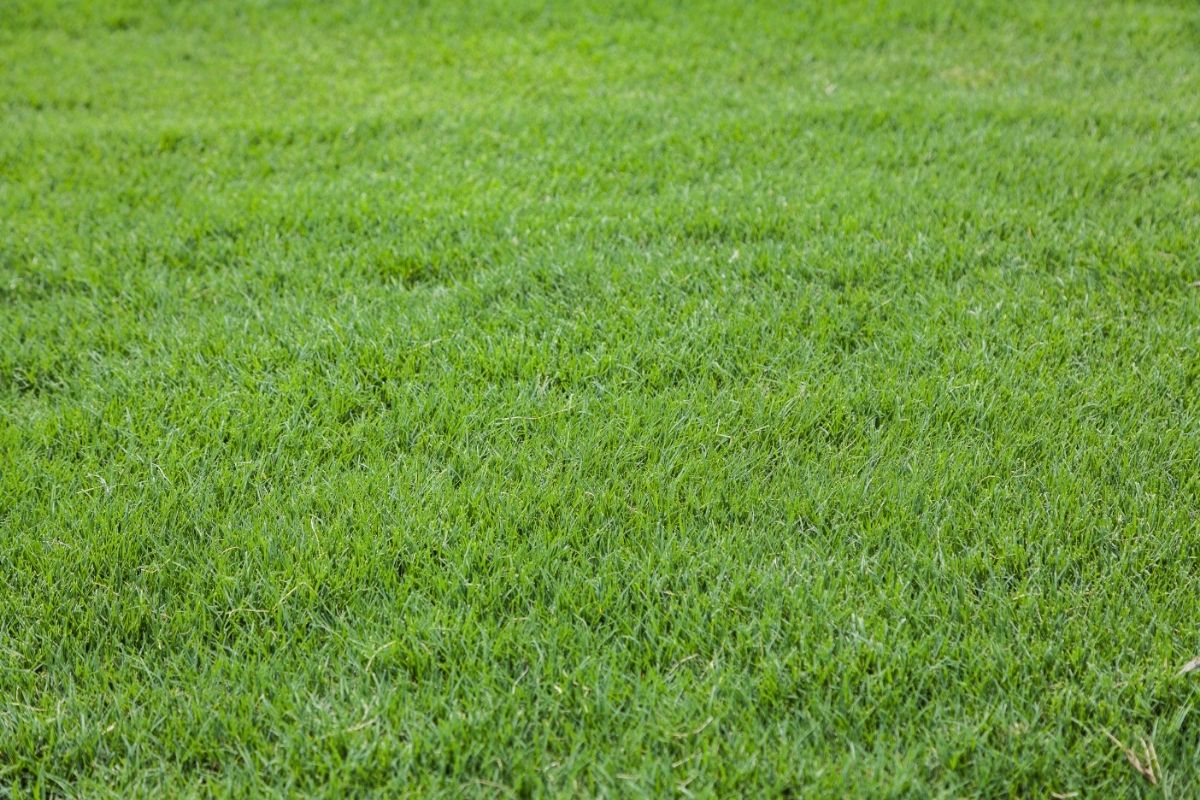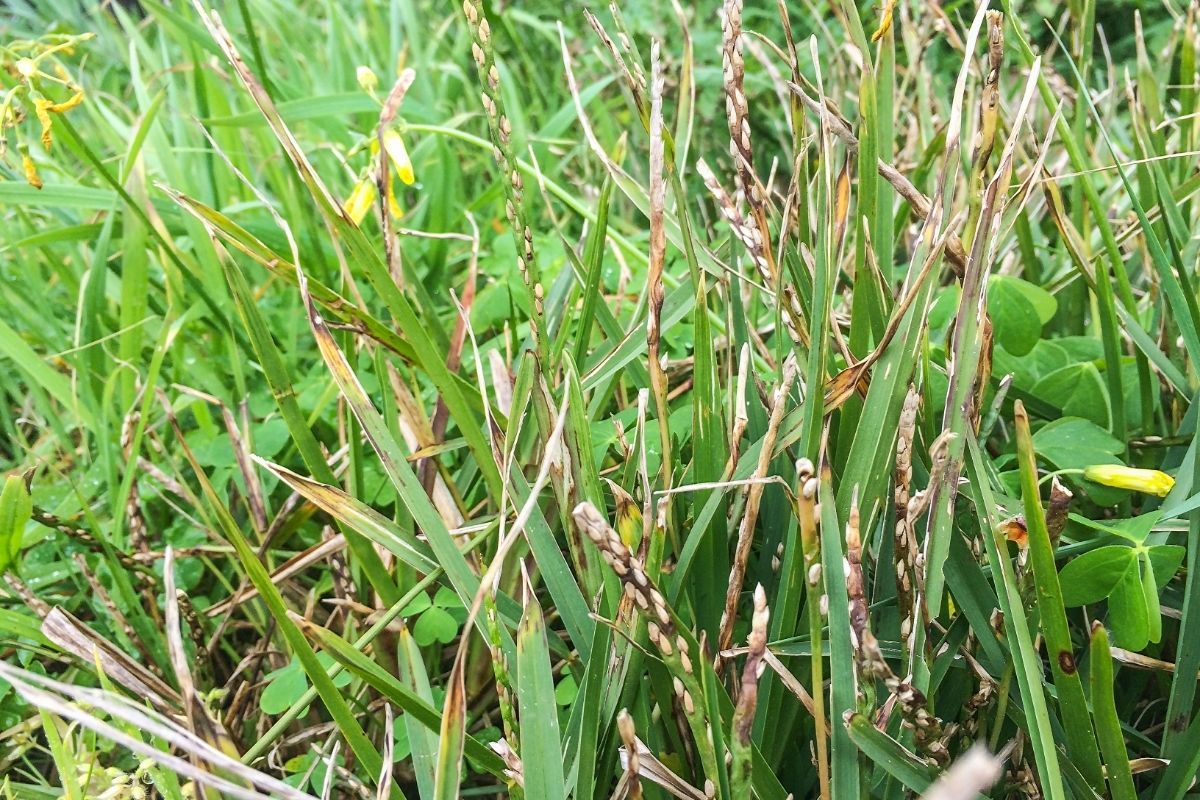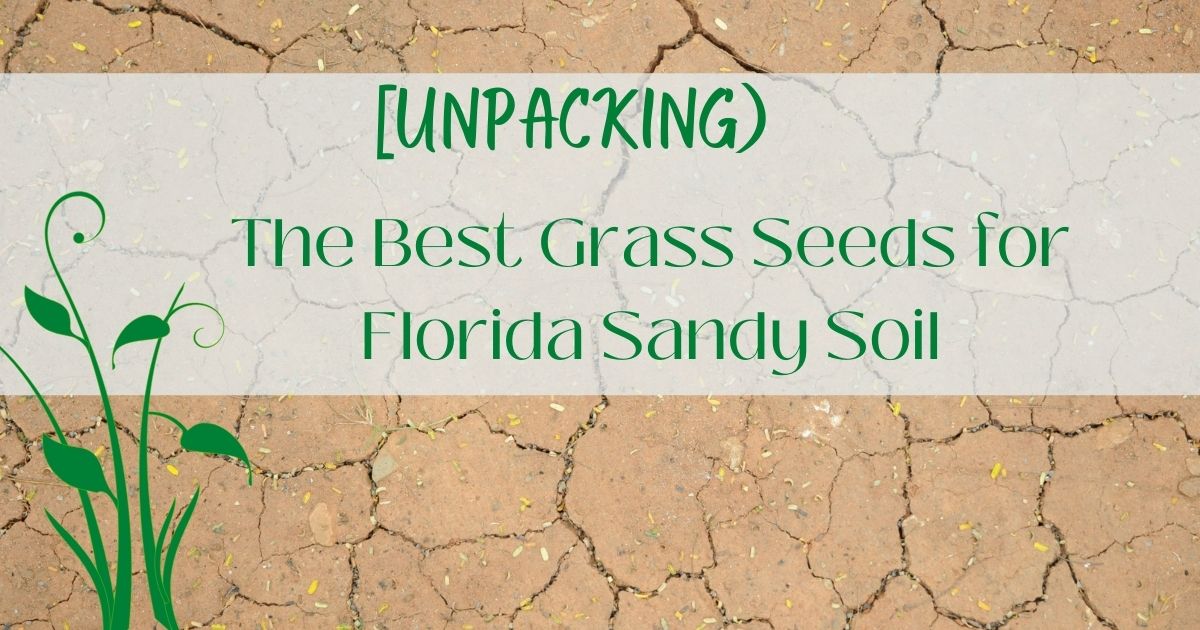What is the Easiest Grass to Grow in Florida?
There are a variety of grasses you can choose for your lawn. However, which is the best grass seed for Florida sandy soil? Zoysia is a hardy grass that can withstand heat, drought, heavy traffic, and other adversities.
This herb can produce a stunning lawn that requires very little upkeep when grown in its ideal growing zones. You will have chosen the best grass if Zoysia Grass matches your expectations and the environment of your garden.

Can Grass Grow in Sand?
While sandy, gravel-filled soil is well-drained and beneficial for some plant life, it is difficult for grass to flourish. Grass requires a lot of moisture to stay lush, and neither sand nor gravel is good at retaining water. Moisture moves through some soil more quickly than it does through others. Also, the regular watering they require tends to wash away nutrients.
Regular sand or gravel improvements can help retain soil moisture and allow drought-tolerant grass species to thrive. Prepare the soil for planting by tilling it well and removing all weeds and pebbles.
A blend of compost or peat and loam topsoil will help the soil retain moisture. Spread 2 inches (5 centimeters) of the mixture on the ground and rake it into the soil 6 inches (2.3 centimeters) deep.
Apply a slow-release fertilizer to the soil’s surface. During the growing season, use a little fertilizer once a month. Do not over-fertilize, as the chemicals may leach into the water table through the sand or gravel. Choose sand-tolerant grass such as Bermuda Grassor Sand Bluestem Grass. You can buy the grass as seed or as sod.
Feed seed grass into a rolling broadcast spreader to sow seed grass over a lawn area. Cover the planted land with chopped straw or grass clippings to help retain moisture. And then water it frequently to maintain the soil moist enough for germination. Lay sod grass across the yard and use a sod roller to smooth it out.
Unless there is a lot of rain, water your grass every day. Water the grass every three days once it has established itself. Rake compost on the grass every three months to amend the soil during the growing season.
Grass Types That Grow Best in South Florida
Bermuda Grass
| Grass-type | Perennial, warm-season grass |
| Sunlight requirement | At least 4 hours of direct sunlight |
| Soil type | Clay, loam, sand soil (well-adapted) |
| Soil pH | 5.8 to 7.0 |
| Peak season | Spring through summer |
Bermuda Grass Florida is a grass that grows in sand and spreads quickly because it thrives in areas with good drainage. Bermuda Grass seed is one of the possibilities to consider if you’re developing a lawn near the shore.
On the other hand, can Bermuda Grass grow in sand and shade? Bermuda Grass may not survive in shaded places, despite its ability to thrive in loose sandy soil. It necessitates total sun exposure for most of the day (at least 4 hours). Before planting a Bermuda Grass lawn in a sandy location, you may want to prune trees around your yard to reduce canopy and shade.
Riviera Bermuda and Yukon Bermuda Grass are two types of Bermuda Grass that can withstand dryness and harsh winter temperatures. These two Bermuda Grass varieties have slow-to-dormancy traits and thrive in transition zones.
It’s worth noting that Bermuda Grass may thrive in various soil types, including clay. This is due to its deep rhizomes and root structure, allowing the grass to access nutrients and water efficiently. It also spreads quickly to form a carpet-like coating, which may aid in preventing moisture loss in highly aerated sandy soils.

Bent Grass
| Grass-type | Perennial, cool-season grass |
| Sunlight requirement | Full sunlight exposure |
| Soil type | Well-drained soil |
| Soil pH | Acidic 5 to 6.5 |
Bent Grass is a typical lawn grass in the South, and it requires well-aerated soils. This makes it one of the best grasses for sand and beach areas. A highly absorbent sand and organic waste mixture can quickly develop a Bent Grass turf. In the northeastern United States, where there are cool and humid climates, you can grow a bentgrass lawn.
Bahia Grass
| Grass-type | Perennial, warm-season grass |
| Sunlight requirement | Prefers full sun |
| Soil type | Light, well-drained soil |
| Soil pH | Slightly acidic 5.5 to 6.5 |
Bahia is a great grass that grows in the sand. Because of its deep root structure, it is well-suited to sandy regions such as beaches. This grass is drought and heat tolerant to a high degree. You can use Bahia Grass seeds to build a lawn by the seaside. It requires less water to thrive compared to other types of sod in Florida, making it a low-maintenance turfgrass.
This is because of its extensive root system. However, it does not fill in as well as other grass types. Therefore, if you want a thick, carpet-like lawn on sandy soil, you should choose another grass variety rather than Bahia.
Seville St. Augustine
| Grass-type | Perennial, warm-season grass |
| Sunlight requirement | 6-7 hours of sun a day |
| Soil type | Sand, muck, clay |
| Soil pH | Most soil types 3.5 to 6.5 |
In sandy soil, St. Augustine Grass thrives. The Seville variety thrives in low to high pH levels and is recommended if you are unsure of your soil’s pH state.

Tall Fescue
| Grass-type | Perennial, cool-season grass |
| Sunlight requirement | At least 4 hours of direct sunlight |
| Soil type | Well draining soils |
| Soil pH | 5.5 to 7 |
| Peak season | Fall and spring |
Creeping Red Fescue thrives in sand, which has a pH of 5.5 to 8.0 and is well-drained. It thrives in various soil types, including sands, gravels, and pebble beaches, and grows along seashores and even in meadows.
Zoysia
| Grass-type | Perennial, warm-season grass |
| Sunlight requirement | Full sunlight exposure |
| Soil type | Soil with good drainage |
| Soil pH | Slightly acidic 6.0 to 6.5 |
Zoysia thrive in sandy soils and is hardy in USDA plant hardiness zones 6 through 9. Because it has deep roots that help it absorb nutrients and water in fast-draining soil types, Zoysia grass seed is ideal for sand soil and yards near the ocean.
Apart from its thick roots, it is highly adaptable to drought and thrives with very little water. As a result, you can grow it in regions where water drains quickly.
Zoysia Grass is slower to develop in growth pace than other turfgrasses like St. Augustine. Still, it will grow swiftly if well-fed with a 5-10-5 NPK or other fertilizer with high nitrogen and phosphorus for root development. You can achieve a good Florida lawn with it.
How to Grow Grass in Sand
When growing a lawn on sandy soils, preparation is essential for optimal grass seed germination, growth, and covering. Although sandy soil drains quickly, grass seeds need moisture to germinate. Below are steps on how to grow grass in sandy soil successfully:
- Remove any debris, sticks, or large rocks from the yard.
- To increase nutrients and water retention, tap the top 4 inches (10 centimeters) of soil and mix in compost.
- Apply a decent beginning fertilizer to your lawn (preferably a fertilizer with high phosphorus in content).
- Properly combine the fertilizer with the top, sandy soil, and compost.
- Follow the package guidelines when planting grass seed that grows in sandy soil.
- By raking the back of your garden rake over the yard, you can cover the grass seed with 1/8 inch (0.32 centimeters) of the local soil.
- To ensure successful germination, water the grass seed thoroughly daily.
- Make sure you don’t overwater your yard. The grass seed will be readily washed away if you do, resulting in a low germination rate.
- Remember that sand soil drains well. It does not hold much water or nutrients. In sandy places such as Florida, Michigan, New York, Wisconsin, Texas, North Carolina, and South Carolina, you may need to do a little more feeding your grass.
How do I Choose the Best Type for My Yard?
Choosing the appropriate lawn grass might make the difference between a never-ending battle to keep your grass green and a low-maintenance turf that delivers year-round beauty and delight. However, what is the easiest grass to grow in Florida with so many options? Here are some simple suggestions on choosing the correct grass:
The Exterior of Your House
The most critical aspect affecting how grasses perform where you reside. Zone of the North cool-season grasses like Kentucky Bluegrass, Perennial Ryegrass, and tall fescue are famous in the Northern United States and Canada, where summers are mild, and winters are frequently cold.
The Southern zone is ideal for warm-season grasses, with hot summers and mild winters. St. Augustine Grass, Bermuda Grass, Centipede Grass, and Zoysia Grass are the most prevalent grasses.
The zone of transition region has hot summers and chilly winters, making it the most difficult for lawns to grow in. Cool-season grasses suffer in the heat of summer. Warm-season grasses can stay brown for up to half the year and are susceptible to winter damage.
Tall fescue is a popular choice in the transition zone since it tolerates cold and heat well and stays green for most of the year. The transition zone also grows Bermuda Grass, Zoysia Grass, and Kentucky Bluegrass.
Consider the Location
You can have the Japanese Maple in the Front Yard. Next, consider the conditions in your backyard. If there are no specific problems, any of the principal grasses for your location should produce satisfactory results.
Other species will adapt better to the specific requirements of challenging places, such as those with deep shade, a lack of water, or salty soils.
Buffalo Grass, which is hardy throughout North America, is a wonderful choice for an out-of-the-way spot that is difficult to provide with water or fertilizer. Fine-leaf Fescues are also suitable for low-input environments. Centipede Grass is a low-maintenance grass that thrives in the Southeast.
Fine-leaf Fescues are the best grass for shade in Florida. Most St. Augustine variants are shade-tolerant in the South, except for the Floratam variety.
Kentucky Bluegrass and Perennial Ryegrass mixtures function well in high-traffic areas in the north. Bermuda grass is favored in the South because of its ability to recover quickly from wear.
Seed producers frequently offer mixtures including numerous species or cultivars chosen for a specific type of location, such as sunny, gloomy, dry, or high-traffic. They undertake the legwork of figuring out the optimum mixes in the proper proportions, and the finished grass will outperform a single-species lawn.
Seashore Paspalum is exceptionally salt-tolerant, making it the ideal sandy soil grass. They thrive in coastal zones subjected to salt sprays or where high-salt effluent water is irrigated.
Is it essential to have a variety of grass? Yes, in a nutshell. Each grass species comes in different types: texture, color, and growth rate. Although the changes may appear minor at first glance, newer cultivars may have hidden benefits. They may, for example, be more resistant to illnesses, pests, or extreme weather.
Although no-name or generic seed is less expensive, it is usually not worth it because you may wind up with an older type prone to issues.
Use a variety of sorts of plants like tall Fescue, Perennial Ryegrass, and Kentucky Bluegrass to get the best results. Although you can make your own mix, prefabricated mixtures prepared for specific locations are more convenient. In general, sticking to well-known brands and purchasing seeds from respected garden retailers won’t let you down.
Cool-season grasses, adapted to Northern climates, thrive in the spring and fall, and remain green into the winter in milder climates. In the north, they’ll go dormant. They don’t like the heat in the summer, and if they don’t get enough water, they’ll turn brown.
Warm-season species are those that live during the warmer months of the year. Warm-season grasses thrive in hot weather and are well-suited to the South and Southwest’s torrid summers.
They will go dormant in locations with little summer rain without extra water. With a few exceptions, warm-season grasses are not very cold-tolerant, and most go dormant in the winter.
Many types are only available as sprigs or sod and must be planted as such.
When should sod, seed, or sprigs be used? You can establish new lawns via sod or seed. Sod is the quickest way to establish your grass, but it’s also the most expensive option. Furthermore, you are limited to the kinds planted by local sod growers. Steep slopes, for example, may necessitate the use of sod.
Slopes are prone to erosion, and severe rains can wash the seed away; sod, especially correctly pegged, will stay place.
Seed saves you money upfront, and garden centers may have a larger selection of kinds. However, seeded lawns can take up to a year to create a thick strand, and you may need to reseed spots that didn’t take. Weeds may also be an issue until the young grass thickens.
Many warm-season types are only accessible as sprigs or plugs since they aren’t available as seeds. These are planted in the ground and gradually spread out until they make a solid lawn. Garden centers sell sprigs by the bushel, whereas the tray offers plugs.
Caring for Your South Florida Lawn
Because of the extreme heat and humidity, South Florida is a unique environment for plants and grass. Maintaining a lawn can be a difficult task. Maintaining a lush green lawn all year in South Florida calls for careful planning and skilled attention. Here are a few pointers for getting lush green grass in South Florida:
- Heat-tolerant grasses are a good choice for lawns in South Florida: Bermuda Grass, Bahia Grass, and Zoysia Grass are grasses that can flourish down here. On the other hand, St. Augustine Grass is the norm for most residential and commercial establishments in Florida. This is because it can readily withstand the humidity and thrive without requiring much maintenance.
- Keep the watering process in mind: Watering the grass is an important element of lawn care. The South Florida Water Management District will impose “water restrictions” at specific seasons of the year; thus, it is prudent to utilize water wisely and adequately. Watering thoroughly and frequently is the best way to deal with the water shortage. Watering plants early in the morning rather than later in the day or evening might cause water loss owing to evaporation or increase the growth of fungus and germs in the grass due to wetness.
- Say yes to fertilizers with high nitrogen content: Fertilizer is also important for maintaining a healthy lawn. In South Florida, high nitrogen fertilizers are a suitable choice for lawns. Slow-release solutions work well because they preserve the soil nutrient-rich while causing no harm. The best time to apply fertilizers is between spring and fall since it is more likely to produce the desired results. Fertilization during a drought is strictly prohibited. Another key item to remember is to water soon after fertilizer application.
- The importance of proper mowing cannot be overstated: Lawns in South Florida must be mowed all year. Summertime necessitates a three-times-per-month mowing routine, whereas winter necessitates a twice-per-month mowing program. In this area, the rule of thumb for mowing the grass is to trim only one-third of the grass length per mowing.
Taller grasses have deeper roots than their shorter relatives, which explains why. During a drought, this is a lifesaver:
- You must monitor weed growth: Weeds wreak havoc on lawns by sucking up nutrients from the soil. For a healthy-looking lawn, they must be kept in check. Herbicides used on time help protect the lawn against weed damage. Controlling weeds with a combination of pre-emergent and post-emergent herbicides is ideal.
- Pest control that works: When it comes to lawn maintenance in South Florida, pests are another issue to consider. Chinch Bugs wreak havoc on the grasses in this area, causing yellowing, browning, and even death. To control this, repeated spraying of insecticides is a requirement.
Conclusion
Can grass grow in sand? Yes, it grows well with proper management. Warm-season grasses and cool-season grasses are the two types of grass found in Florida. Choosing a grass suitable to your area and has the traits you desire is the most significant component in building and keeping an attractive and problem-free lawn.
Geographically and locally, Florida boasts a wide range of climates. In the mountains, a grass that thrives in the state’s southern portion may not survive the winter. On the other hand, cool-season plants are not adapted to the hot, humid summers of the coastal plain.
Having a flourishing, beautiful green lawn in South Florida will undoubtedly necessitate a bit of additional love and attention. With a bit of forethought and care, this desire can become a reality.
